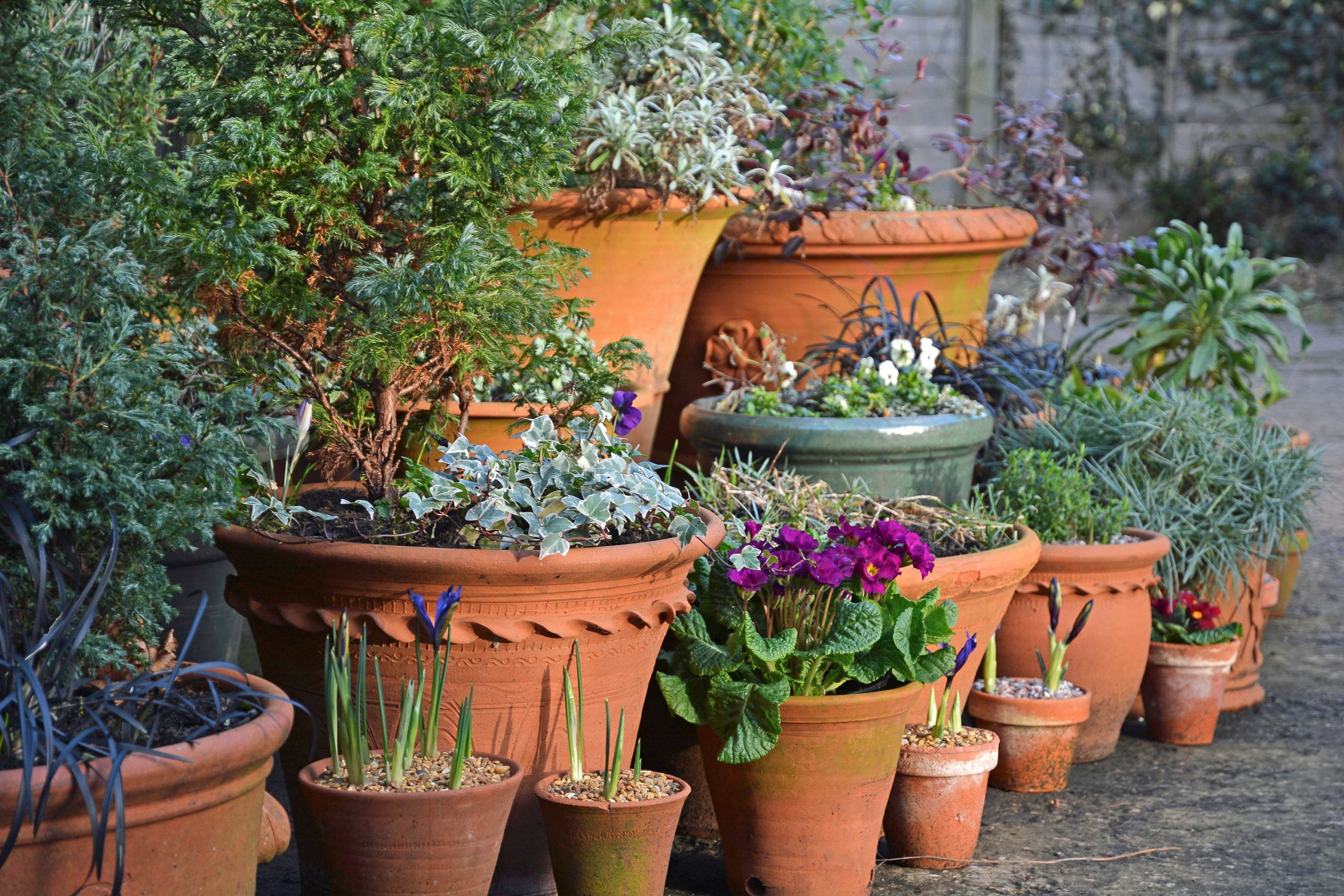How to make your container displays last through winter
Add conifers, evergreen shrubs and filler plants to the mix, advises expert Harriet Rycroft.
There’s still time to plant winter containers before it gets too cold, as garden centres are awash with violas, pansies, skimmias, berried plants, evergreens and much more. Yet so often when winter sets in, colours fade, cyclamen rot, pansies and violas sulk, and containers can look a little lacklustre.
“Conifers are great because they come in so many shapes, sizes and colours and give you structure right the way through the season,” says plantswoman and container expert Harriet Rycroft, whose new book Pots offers practical advice on all aspects of container planting.
“Then you’ve got a framework. You can fill in the gaps with seasonal colour that comes and goes, like bulbs and pansies, but you have that structure.”
View this post on Instagram
Evergreen shrubs such as holly are tough and can be bought small cheaply and initially added to planters in a mixed display, after which they can be moved to a larger pot as stand-alone specimens and even made into topiary in subsequent years, she suggests.
Buying conifers small will always save you money. “Eventually you can have a big conifer, like a tallish pine or a cryptomeria with a dense rootball, which needs to live in a pot by itself,” adds Rycroft. “But other things can be put on top of it, so you could even arrange some pots on top of the pot to decorate it, or it can be a really useful backdrop to other pots.”
Create groups

Pots look great in group displays
Rycroft likes to create groups of pots, focusing on details. “With conifers and grasses, you can make a framework so that when you stand back and look at the group, there’s a satisfying occupation of the space,” she says.
“There are ups and downs and things drooping over the pot. You can get classic triangular pointed shapes, but there are lots with much more character, which cascade or look fluffy or weird. If you mix that up a bit, you’ve got a framework that’s always interesting.”
Admire subtle colour
The detail might be the fine needles or sprays of leaves or tinges of colour in winter, she observes. “Some conifers are bright blue, others are green. Things like Cryptomeria ‘Elegans’ forms a feathery, upright tree that’s bright green in summer, going rusty red when it reacts to the cold in winter.
“Hellebores are also very useful, as they start flowering very early,” says Rycroft. “One of my favourites is Helleborus x sternii ‘Silver Dollar’, which has really nice blue-grey leaves and pink-grey clusters of flowers. They need a deepish pot to thrive.”
Change fillers for more interest
Look in garden centres, which are great at creating seasonal displays and giving you ideas, she suggests. Also, lift plants out of your own garden to use in pots, such as grasses that have self-seeded. Even forget-me-nots, which have self-seeded, could be lifted. “They occupy the surface of the compost well, with their little green rosettes, then in April or May they will come out the same time as the tulips.”
Consider ornamental grasses
Rycroft says: “Grasses provide movement. There are lots of good carex with different colours, while Festuca glauca makes lovely little tufts of blue or green. You can put them in pots on their own or plant small bulbs under the soil around them, such as crocuses, anemones or scilla. They will be coming out at the foot of the grasses.”
Cheat with colourful stems
“Look at the stems of plants – things like cornus – and you can cheat. You don’t have to put a whole cornus plant in your pot. If you or a friend has a lovely red or yellow-stemmed one, just cut a few stems from them and put them in the pot. I’ve also put glass nuggets in a pot (on the surface) just to give a glint of colour or just use pretty pebbles to give a bit of interest.”
When planting winter pots…
Avoid using compost with added wetting agents, because you won’t need that in winter, she advises. “Make sure the compost doesn’t feel sticky. If you squeeze it and it sticks together and doesn’t fall apart, it probably won’t be great for winter. But mix in grit or leafmould if the compost is too moist.”
Winter plants can be fed habitually with slow release fertiliser granules, which will release nutrients when they are needed, she adds.
What about watering?
Check the compost in your pot every week, Rycroft advises. If it is dry, give it some water. If a pot freezes, plants can’t pull moisture up from the roots. “Keep them consistently moist so that if it freezes, they won’t be so stressed.”

Pots by Harriet Rycroft is available now.
The Press Association
Latest posts by The Press Association (see all)
- Best places to see bluebells this spring - April 11, 2025
- 6 foods that are great for your heart health - April 8, 2025
- Award-winning actors to star in Second World War film released for VE Day - April 8, 2025
- King Charles and Queen Camilla release official 20th wedding anniversary photographs - April 7, 2025
- The 5 ways drinking alcohol can affect your body - April 7, 2025




















